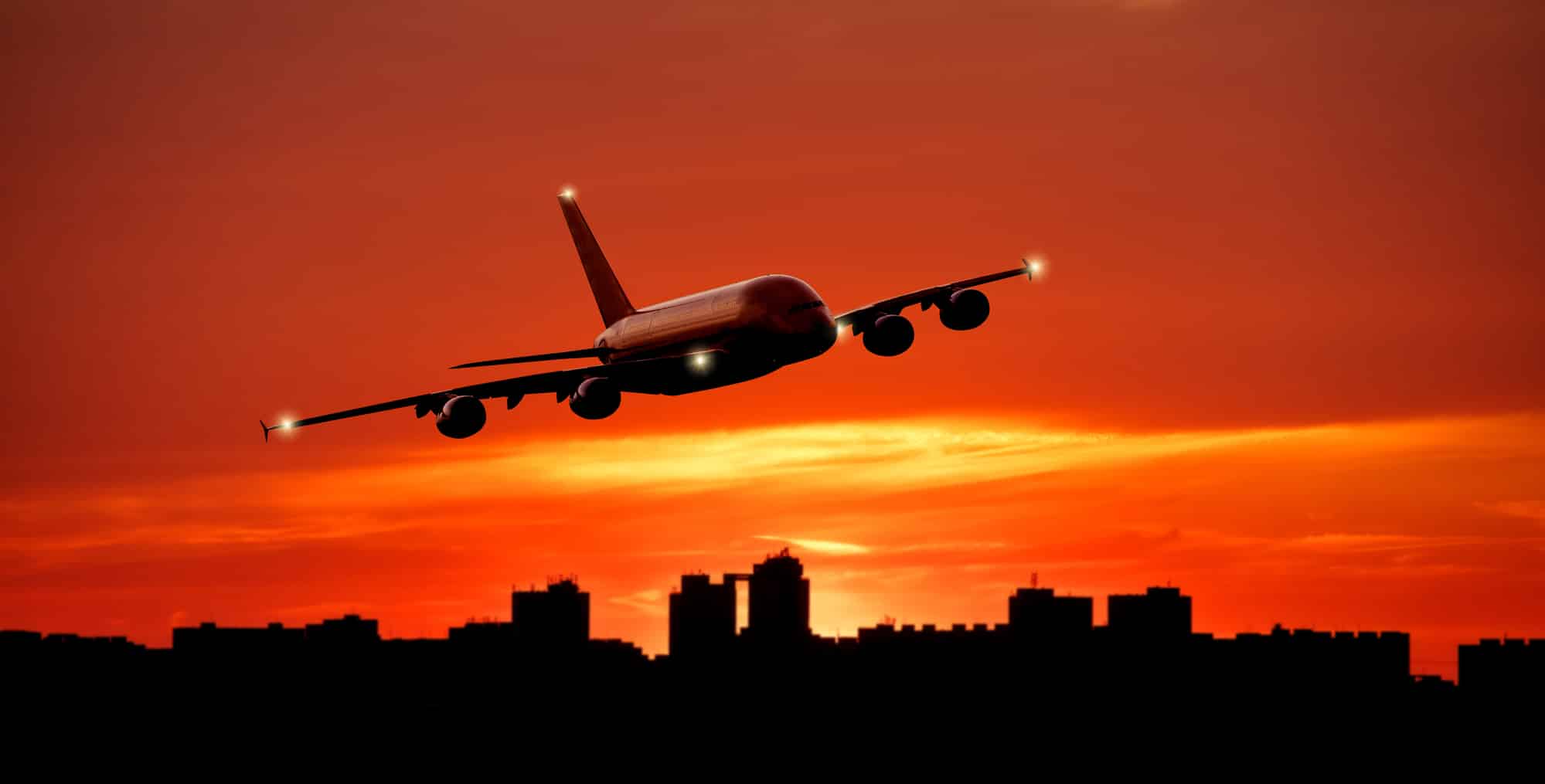Flying today has never been safer. According to IATA in 2018, it was estimated that there was only one fatal accident for every 4.2 million flights which makes it the safest form of long-distance travel.
When we think of flying, we typically think of getting to the airport in the morning and arriving at our destinations the same day. However, sometimes you have to fly overnight, but is it safe?
Yes, it is safe to fly at night. John Cox, a retired US Airways captain and safety consultant stated the following on USA Today:
Aviation has never been safer. This includes night flying.
The airline industry has even invested in different types of technology to improve the safety for planes regardless of the time of day.
Safety Lights
Aircraft are actually designed with red lights on the port (left) wing and green lights on the starboard (right) wing, plus strobe lights on the underside and tail of the plane.
Thanks to these lights, a pilot can perform a visual sweep and see if there are any other planes nearby.
Advanced Navigational Instrumentation
Aircrafts are equipped with radar, which projects radio waves to check for planes or other physical obstacles (e.g. a mountain).
Modern-day navigation systems in an airplane cockpit also incorporate a traffic collision avoidance system (TCAS), which sends out an invisible radio frequency to nonverbally communicate with other aircraft. If two planes equipped with TCAS come near each, the navigation system warns the pilots of each aircraft.
Guidance from Air Traffic Controllers
Pilots don’t just have to rely on their own instruments, either. Commercial aircraft are monitored by air traffic controllers, who use radar systems to track planes. Then they inform pilots of any nearby aircraft that could pose a danger of collision.
Nighttime Landing Systems
But what about landing the plane? Fortunately, pilots have plenty of aids for that critical step as well. For example, most airports use what’s called an instrument landing system (ILS), which is meant specifically for less-than-ideal flying conditions, such as stormy weather.
Two separate radio signals communicate with the airplane’s flight instruments, giving the pilot crucial information about how close the plane is to the runway both vertically and horizontally. Once the ILS has guided the plane close enough to the runway, the pilot can make a safe landing by watching the airstrip’s landing lights.
Hopefully, this gives you a sense of security about the safety of flying at night. There may be some other questions that you are wondering about related to nighttime aviation.
Is it Harder to Fly a Plane at Night?
Pilot standards are higher for flying at night versus the day. Commercial pilots receive education about night flying during their training, and there are more safety procedures to observe for flying at night.
However, any skilled and experienced pilot should have no more problem flying a plane at night than he or she would while flying through a cloud or in the middle of inclement weather.
What is the Safest Time to Fly?
According to Mary F. Schiavo, the former Inspector General for the Department of Transportation, the safest time to fly is earlier in the day. This is because a greater number of aircraft accidents occur later in the day due to pilot fatigue. This can be made worse by unsafe weather or flight delays, which put more pressure on both pilots and air traffic controllers.
If a pilot is accustomed to nighttime flying, he or she may be sharper at night than during the day because his sleep schedule will have adapted to match his flight schedule.
Do Pilots Prefer Flying at Night?
Every pilot is different and has his or her own personal preference. In general, pilots prefer daytime flying because it offers greater visibility, more social energy from passengers (especially if they’ve been enjoying some wine or a similar beverage), and the ability to maintain a normal sleep schedule.
Pilots who prefer flying at night often appreciate the low levels of aircraft traffic and radio use, decreased chance of turbulence, and higher likelihood of passengers being tired and compliant. Passengers are less likely to argue with crew members if they’re too sleepy to do anything but nap or plug in some earbuds to listen to some tunes or a podcast.
Final Thoughts
We hope that this information about aircraft instruments, nighttime safety precautions, and pilot preferences has put your mind at ease about flying at night safely. There may be a few extra things for a pilot to take into account, but nighttime flying is safer than it ever has been before.

